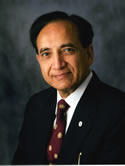Prognostic factors of recurrence in encapsulated Hurthle cell carcinoma of the thyroid gland: A clinicopathologic study of 50 cases Journal Article
| Authors: | Ghossein, R. A.; Hiltzik, D. H.; Carlson, D. L.; Patel, S.; Shaha, A.; Shah, J. P.; Tuttle, R. M.; Singh, B. |
| Article Title: | Prognostic factors of recurrence in encapsulated Hurthle cell carcinoma of the thyroid gland: A clinicopathologic study of 50 cases |
| Abstract: | BACKGROUND. Follicular carcinomas of the thyroid gland, including its oncocytic variant (so-called Hurthle cell carcinoma), are subdivided into the indolent encapsulated ("minimally invasive") and the clinically aggressive widely invasive tumors. There are, however, cases of encapsulated follicular carcinoma that recur and metastasize. Identifying these cases at the time of diagnosis is crucial for prognostic and therapeutic considerations. Because to the authors' knowledge most studies do not focus exclusively on the encapsulated Hurthle cell carcinoma (EHC), the current study attempted to identify predictors of recurrence in EHC. METHODS. A tumor was defined as EHC if it was encapsulated, macroscopically well defined with microscopic but no macroscopic evidence of vascular or capsular invasion, and composed of >75% follicular oncocytic cells. Retrospective chart review and microscopic examination identified 50 primary tumors meeting the above criteria at the Memorial Sloan-Kettering Cancer Center between 1967 and 2005. The cases were analyzed for various histologic and clinical parameters. Each parameter was correlated with recurrence-free survival (RFS). RESULTS. Seven of 50 (14%) patients developed disease recurrence. All patients who developed recurrence were found to have a high number of foci of vascular invasion (≥ 4). In univariate analysis, > 4 foci of vascular invasion (P <.0001), tumor size > 4 cm (P = .049), the presence of mitosis (P = .018), and a solid/trabecular growth pattern (P = .009) were found to be correlated with a decreased RFS. Extensive capsular invasion, gender, and age did not confer a statistically higher recurrence rate. The finding of a solid/trabecular growth and mitosis correlated with the presence of numerous foci (> 4) of vascular invasion (P = .01 and P = .005, respectively). CONCLUSIONS. A diligent search for vascular invasion is recommended in EHC that display mitosis or a solid/trabecular growth pattern. The presence of a 4 foci of vascular invasion should alert the pathologist and the clinician to a significantly higher risk of recurrence in EHC. © 2006 American Cancer Society. |
| Keywords: | adult; cancer survival; clinical article; human tissue; middle aged; histopathology; review; cancer recurrence; combined modality therapy; mitosis; neoplasm recurrence, local; recurrence; adenoma, oxyphilic; cancer invasion; radioactive iodine; thyroidectomy; thyroid carcinoma; thyroid neoplasms; thyroid gland; thyroid; encapsulation; follicular carcinoma; encapsulated; hürthle cell carcinoma; vascular invasion; capsular invasion; hurthle cell carcinomas; solid growth pattern |
| Journal Title: | Cancer |
| Volume: | 106 |
| Issue: | 8 |
| ISSN: | 0008-543X |
| Publisher: | Wiley Blackwell |
| Date Published: | 2006-04-15 |
| Start Page: | 1669 |
| End Page: | 1676 |
| Language: | English |
| DOI: | 10.1002/cncr.21825 |
| PUBMED: | 16534796 |
| PROVIDER: | scopus |
| DOI/URL: | |
| Notes: | --- - "Cited By (since 1996): 16" - "Export Date: 4 June 2012" - "CODEN: CANCA" - "Source: Scopus" |
Altmetric
Citation Impact
BMJ Impact Analytics
Related MSK Work









